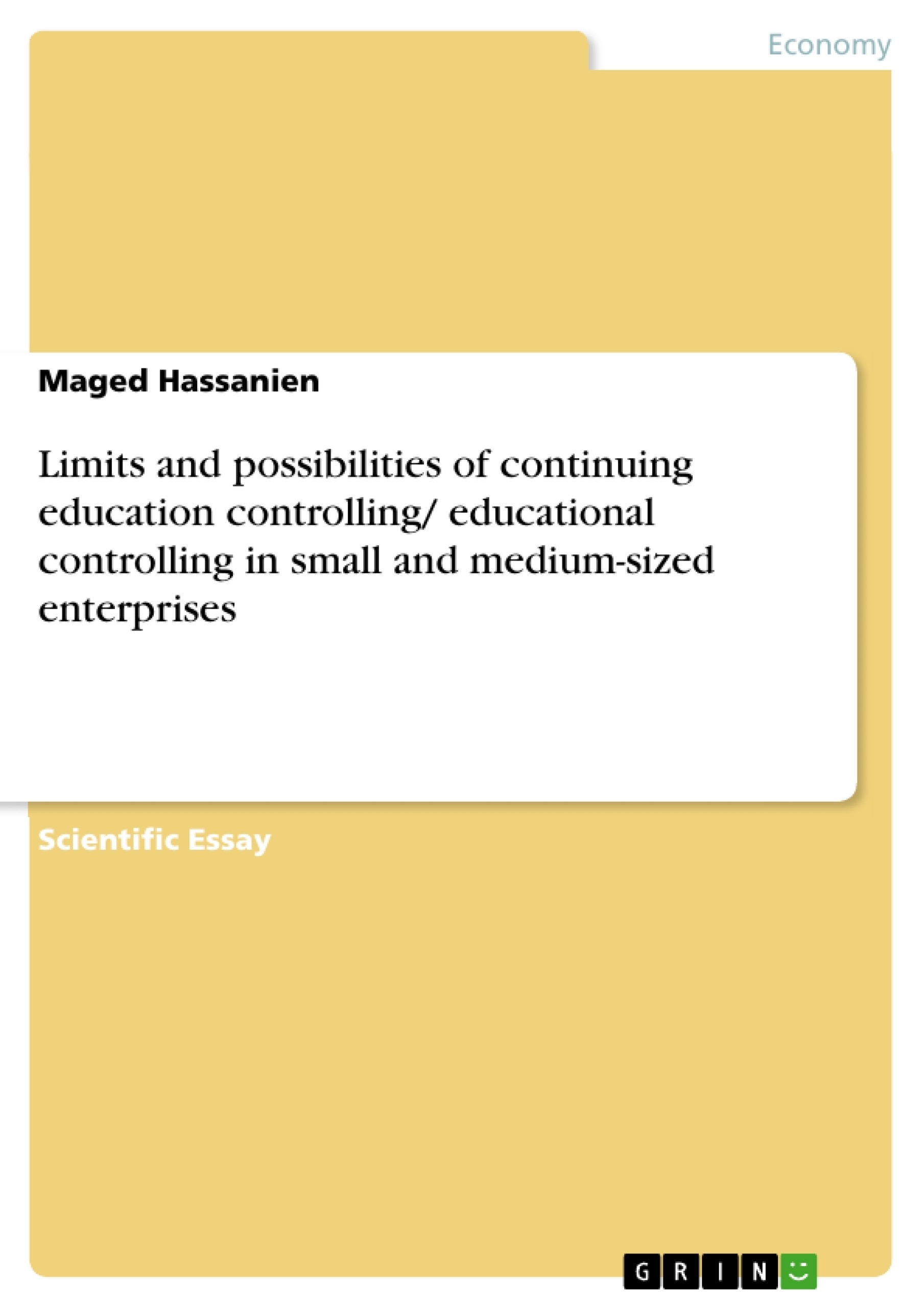Nobody would set up a new subsidiary or launch a new product on the market without making sure that this would pay off. This is usually different for training courses in companies. It often remains unclear whether the last SAP seminar was a waste of time, what contribution the recent rheological training courses made to the company's success and whether the training department works efficiently. Hardly any person responsible for personnel development dares to make a more binding statement than "Investments in training are assumed to have positive returns" - here it is made clear that every further training measure must make "sense" - on the one hand for the employee who experiences real further training and on the other hand for the company that a truly trained employee has "added value" in terms of value creation for the company.
These are small examples of problems that education controlling is intended to solve and that are relevant not only in economically difficult times for the 75.3% of enterprises that provide continuing vocational training. The desire of many companies to make their investments in the knowledge of their employees transparent and to justify them economically is understandable when one considers the levels of investment: The continuing training market had a volume of approximately EUR 6.5 billion in 2013. Calculated per capita, 2000 German companies invest an average of EUR 624 per employee in training courses.
Inhaltsverzeichnis (Table of Contents)
- Introduction to the topic - importance of continuing vocational training in enterprises, especially in small and medium-sized enterprises
- Trend / Future of further education and the necessity of education controlling
- Methods for measuring the success of continuing education
- Check, measure and control education budget and costs.
- Cost-benefit calculations (ROI=Return on Investment) to secure the company's success
- Simple and feasible education controlling for KMU´s could be:
- Quality control quality cyrcle as a recommendation for further training controlling for the implementation of further training measures in KMU's
- Conclusion
Zielsetzung und Themenschwerpunkte (Objectives and Key Themes)
This text delves into the importance of continuing vocational training for businesses, particularly small and medium-sized enterprises (KMUs), and explores how to effectively measure and control the success of these training initiatives. The goal is to provide insights into the benefits of education controlling, its practical application, and its role in fostering efficient and effective training programs.
- The necessity of continuing vocational training in the face of globalization and rapid technological advancements.
- The challenges and opportunities of education controlling in KMU´s.
- The benefits of implementing a cost-benefit analysis (ROI) and a quality cycle approach to evaluate the success of training programs.
- The impact of long-term training plans on the competitiveness of KMU´s.
- The importance of aligning training programs with operational goals and providing concrete proof of success.
Zusammenfassung der Kapitel (Chapter Summaries)
- The introduction highlights the crucial role of continuing vocational training for businesses, particularly KMU´s, in an era of rapid technological advancements and globalization. It emphasizes the need for efficient and effective training programs to ensure competitiveness and maintain a skilled workforce.
- The second chapter discusses the evolving landscape of further education and the critical need for education controlling to measure and control the effectiveness of training initiatives.
- Chapter three focuses on methods for evaluating the success of continuing education, including the importance of checking, measuring, and controlling educational budgets and costs. It also explores the benefits of utilizing cost-benefit calculations (ROI) to assess the return on investment for training programs.
- Chapter four examines practical and feasible approaches to education controlling for KMU´s, emphasizing the need for long-term training plans and the importance of aligning training programs with the specific needs of the company.
- Chapter five delves into the concept of a quality cycle as a recommendation for further training controlling, showcasing its practical application in the implementation of training measures for KMU´s.
Schlüsselwörter (Keywords)
This text focuses on the key topics of continuing vocational training, education controlling, cost-benefit analysis (ROI), quality cycle, and the challenges and opportunities of training initiatives in small and medium-sized enterprises (KMU´s). It emphasizes the importance of strategic planning, efficiency, effectiveness, and the need to demonstrate concrete proof of success in education programs.
- Citation du texte
- Maged Hassanien (Auteur), 2018, Limits and possibilities of continuing education controlling/ educational controlling in small and medium-sized enterprises, Munich, GRIN Verlag, https://www.grin.com/document/437060



